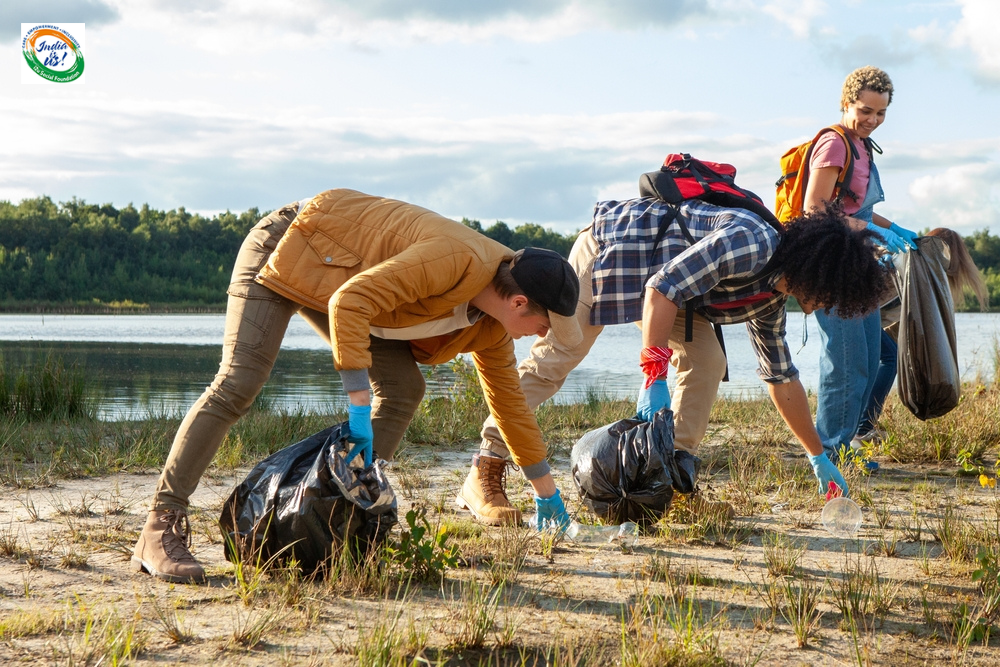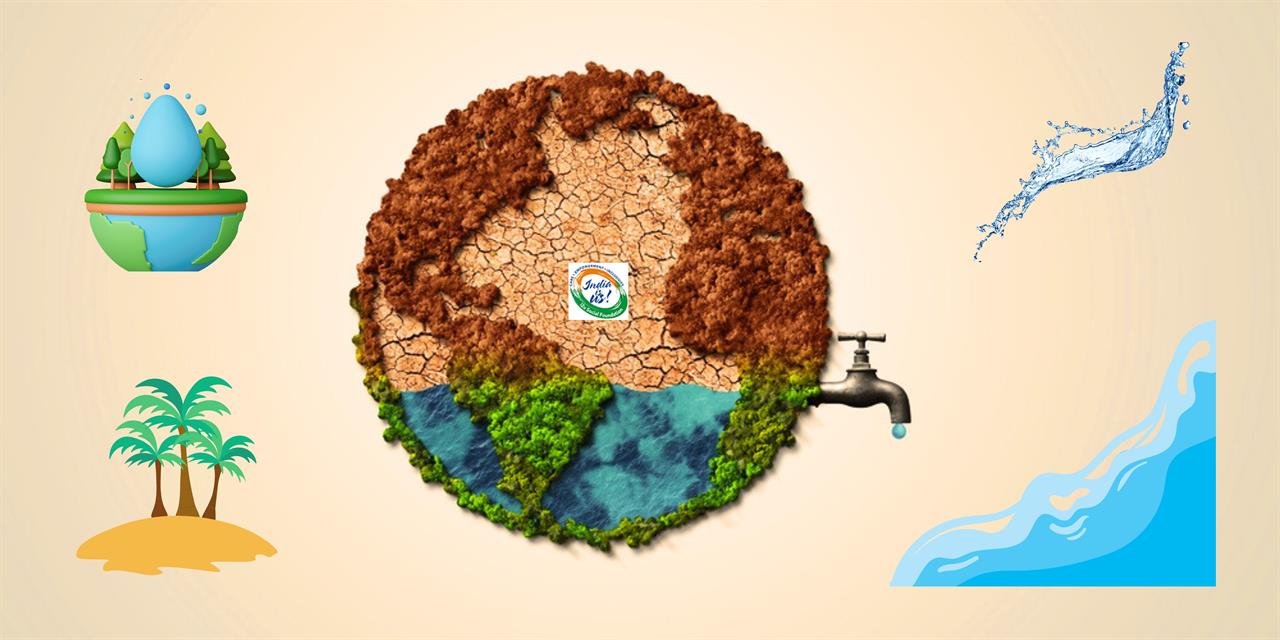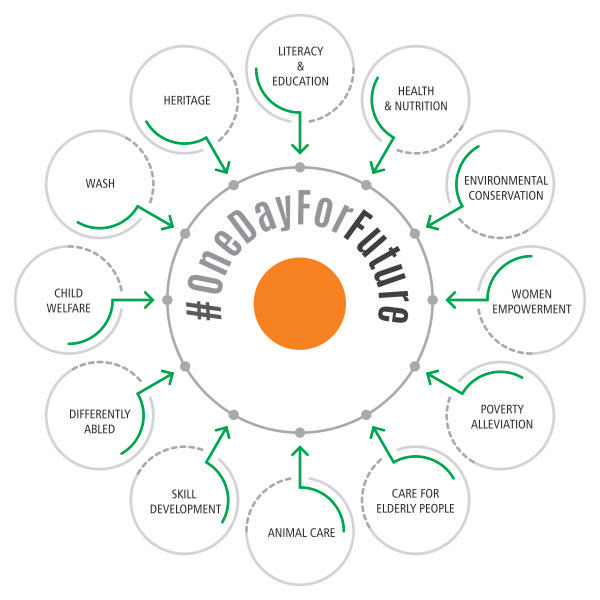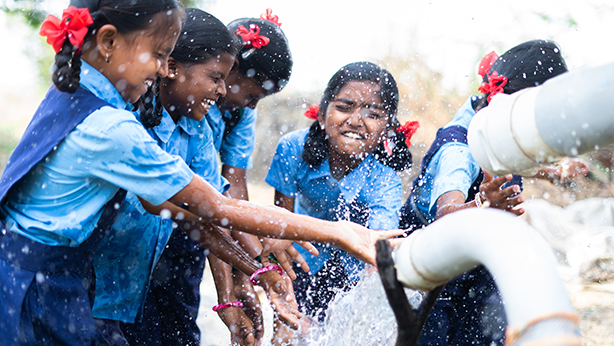Use your power to make a difference by joining our Let's Do Good initiative.
Small Town, Big Impact: Simple Ways to Keep Your Community Clean
Thursday , 27 March 2025- 5 min. read
The conservation of public health and environmental sustainability depends fundamentally on maintaining cleanliness. All community members need to jointly work to establish a pristine environment that supports health. Although there is no solitary method to transform the world through personal efforts do not deprive yourself of making positive impacts on our environment. The practice of personal environmental responsibility develops when people deliberately handle their behavior and actions toward nature. As people become more responsible they adopt better disposal habits which also include using public waste containers while keeping their houses and workplaces neat. Although individual acts seem small these collective behaviors form a big impact on the environment. Your members can support cleanliness efforts by learning specific behaviors that promote sustainability at every level.
Taking Personal Responsibility for Cleanliness
People commonly neglect their responsibilities to preserve the cleanliness of their surroundings together with their environment. We usually identify the authorities as the reason behind community uncleanliness while neglecting our role in maintaining cleanliness. We need to take individual responsibility in cleanliness matters to establish a sustainable and healthy environment. Prioritizing cleanliness creates an example that encourages multiple individuals to work together while sustaining a healthy and clean environment. A sense of pride combined with ownership motivates individuals to replicate these efforts which encourages additional people to participate. Each person residing in the community should actively participate in cleanliness maintenance. Taking responsibility for our individual actions enables us to create major changes for the environment. These strategies will help you participate in environmental cleanliness efforts:
- Reduce, Reuse, Recycle
Following the waste reduction strategy that combines reusing and recycling with reduction methods serves as an easy foundation for improving environmental cleanliness. We can minimize landfill and ocean waste through our reduced purchase of single-use plastics while we reuse materials instead of discarding them and we recycle paper along with plastic and glass products.
- Proper Waste Disposal
Katunika Porwaziti holds an essential role in sustaining clean environments. Community members need to place garbage waste into proper waste bins and they should also join their community's clean-up activities.
- Conservation of Natural Resources
Natural resource conservation of water and energy stands crucial for both sustainable development and environmental cleanliness. Community members should support cleanliness by controlling their water and power usage and by using public transportation and sharing rides with others.
Community-Led Initiatives for Cleanliness
The maintenance of clean surroundings needs everyone to participate actively together with both organizations and national governments. Community-based initiatives have proven to be a strong method that strengthens both cleanliness promotion and community member ownership. Community initiatives operated by residents tend to produce important effects that benefit local communities. Physical improvements of the environment combine with community pride and ownership creation to characterize their effectiveness. These initiatives result in the unification of people while supporting social unity and activating citizens to take joint action. Several imaginative strategies exist for organizing cleanliness initiatives but following these examples can also help you.
- Community Clean-Up Events
A community clean-up event serves as an excellent opportunity to unite neighbors in both service and cleanliness promotion. Community events take place in parks and beaches as well as streets and marketplaces.
- Adoption of Public Spaces
Members of the community must adopt public spaces such as parks and gardens alongside streets to take ownership of their cleanliness. Community members should organize groups to work together toward sustained maintenance of their adopted public areas.
- Education and Awareness Programs
The promotion of both cleanliness and sustainability depends heavily on carrying out education and awareness programs. Community members should lead educational programs including seminars and workshops in order to teach people about sustainability alongside cleanliness priorities.
Community organizations should link up with their Local Authorities to achieve cleanliness objectives.
Cleaning our surroundings along with our environment demands dedicated participation from people and organizations alongside government involvement. Local authorities should collaborate with communities to reach this objective. The combined force of our resources, expertise and official power enables us to establish an environment that promotes sustainability as well as health and cleanliness. Working with local authorities enables the creation of effective programs that will maintain sustainable cleanliness practices in the future. How local authorities contribute includes providing the best practice methods, spotting priority areas along with creating programs and policies that maintain cleanliness and sustainable practices. The following procedures will help you establish collaboration with local authorities:
- Reporting Littering and Vandalism
Residents should report all cases of vandalism and litter to appropriate local municipal authorities for cleanliness maintenance purposes. It is possible to report incidents by getting in touch with the municipal office through their telephone or utilizing their online incident-reporting system.
- Participating in Public Hearings
People living in the community have the opportunity to attend public hearings which enable them to voice their opinions regarding clean government policies and sustainability plans.
- Supporting Local Policies and Initiatives
Local community members should back policies and sustainability initiatives that focus on cleanliness through their support. Local representations can be reached through petition support and community gathering attendance while residents can reach out to their representatives through a number of communication methods.
The need exists to properly address both the problems of inequality and the basic access to cleanliness services.
Every human being should have the right to clean living environments but numerous global populations currently lack proper sanitation systems and hygiene facilities. Lack of access to cleanliness services violates basic social rights and creates substantial impacts on public health and the economy together with affecting environmental sustainability. The management of both inequality and the accessibility of cleanliness steps will lead to better sustainability along with better public health outcomes. A comprehensive plan that incorporates infrastructure development, community-led projects and policy advocacy together with intersectional inequality solutions will establish consistent access to clean spaces for every human throughout the world. The following strategies enable you to fight against inequalities and improve access to hygiene services:
- Supporting Vulnerable Populations
Members of the community who wish to help homeless individuals alongside elderly residents and persons with disabilities should ensure they have access to sanitary water resources and proper hygiene facilities.
- Advocating for Policy Change
People in the community need to work toward modifications in government policies to solve access problems that cause inequalities. The necessary changes should be advocated through representative contact combined with petition signing and public testimony participation.
- Providing Education and Resources
Community members need to deliver educational programs with sustainability resources to helpless populations while teaching them about cleanliness maintenance. The organization of sanitary workshops along with clean water supply and sanitation provisions and educational resources distribution helps reach these goals.
The Role of Technology in Promoting Cleanliness
The recent developments in science alongside technology created pathways for easier human contact with living and non-living entities. Cleanliness has experienced a radical change through technological advancements throughout various aspects of human life. Technology advancements enable better maintenance of cleanliness together with hygiene support and environmental protection. Technology demonstrates a wide range of applications for cleanliness support through smart waste management combined with advanced water purification techniques thus reshaping our entire approach to cleanliness with better efficiency and effectiveness. The following ways illustrate technology's essential contribution to sustainability along with cleanliness promotion:
- Mobile Apps for Cleanliness
Through mobile apps people can report both littering and vandalism activities while the same devices distribute educational materials about cleanliness and sustainability features and encourage neighborhood-based volunteer involvement.
- Social Media Campaigns
Through social media campaigns, individuals can obtain information about both cleanliness and sustainability together with educational content and community-initiated and resources.
- Data Analytics for Cleanliness
Timely data analysis enables companies to monitor their advancements as well as recognize failing areas and create policies from obtained insights.
The Importance of Community Engagement
Every community depends on active outreach to preserve the cleanliness of their spaces. People achieve extraordinary environmental outcomes by collectively taking charge of their surroundings along with their neighborhoods. The implementation of community engagement for cleanliness both creates social solidarity and educates people while helping them shape better behaviors. Community engagement practices provide individuals with the power to execute cleaning initiatives which stands as its primary advantage. Participation of community members in cleanliness initiatives makes them develop a stronger commitment to the results while maintaining a sense of ownership in their work output. The investment of ownership provokes people to keep joining cleanliness initiatives thus maintaining a lasting positive impact. The achievement of cleanliness alongside sustainability depends heavily on community participation. The community can participate through various channels which include:
Participating in Community Events
Community members can take part in the critical activities of cleanliness-based initiatives organized as parades or festivals and group clean-up events to advance both cleanliness and sustainable practices.
- Joining Community Groups
Environmental organizations along with community gardens and neighbourhood watch groups welcome community members who want to support cleanliness efforts and sustainability practices.
- Volunteering for Cleanliness Initiatives
The residents of the community should become involved in cleanliness initiatives including both park cleanups and beach cleanups and community garden events to advance local sustainability standards.
Every person in society bears a responsibility to maintain cleanliness for sanitary living environments. We can achieve a clean and healthy environment for everyone through personal sanitation responsibility combined with group-led initiatives and municipal authority cooperation as well as aiming to address inequality regarding cleanliness and using modern technology.
Progress needs to emphasize cleanliness as well because this protects both public wellbeing along environmental health sustainability. United efforts between people will build a sustainable future with better health and cleanliness for future years. Our collective resources can build a better sustainable future that benefits everyone through environmental cleanliness. Establishing an impact on the environment requires small collective actions from everyone.

















